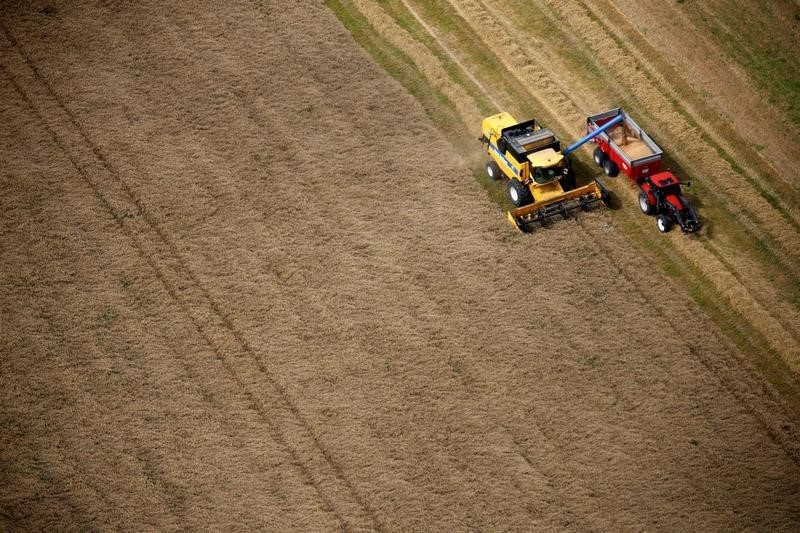WASHINGTON, Nov 15 (Reuters) - U.S. Department of Agriculture has paid out nearly $840 million to farmers to date as part of a promised $12 billion aid program rolled out by President Donald Trump last July to offset losses from the imposition of tariffs on American exports.
A total of $837.8 million to date has been paid out with the top five commodities being soybeans, wheat, corn, dairy and hogs, USDA told Reuters. The five states that received the highest amount of aid were Illinois, Iowa, Kansas, Indiana and Minnesota.
The aid delivered remains a fraction of the promised amount at a time when the American farmers are struggling with loss of export markets from trade wars.
Several trade groups such as dairy farmers have complained that the amount they received was far below their losses. ID:nL8N1X58EV
The Trump administration in late May announced tariffs of 25 percent on steel imports and 10 percent on aluminum imports, prompting retaliation from top trading partners that have spilled into agriculture.
Washington has also slapped tariffs on $250 billion worth of Chinese goods earlier this year as part of Trump's vow to cut the U.S. trade deficit with China.
Beijing retaliated by hitting $110 billion of U.S. products, including the agriculture sector, prompting the USDA to offer compensation to farmers of soybeans, sorghum, corn, wheat, cotton, dairy and hogs.
China, traditionally the biggest buyer of U.S. soybeans, has been largely out of the market, leaving farmers struggling with a supply overhang.
The aid package includes cash payments for farmers of soybeans, sorghum, corn, wheat, cotton, dairy and hogs. The USDA had already outlined the allocations for the first $6 billion at the end of August.
Secretary of Agriculture Sonny Perdue said the second $6 billion was set to be outlined in December. He added that there were no plans for now to extend the aid into 2019.
The United States has clinched a new trade deal with Canada and Mexico, key export markets for agricultural commodities, dubbed as the new NAFTA, in October but American farmers are yet to see the benefits. ID:nL2N1WV0F3
